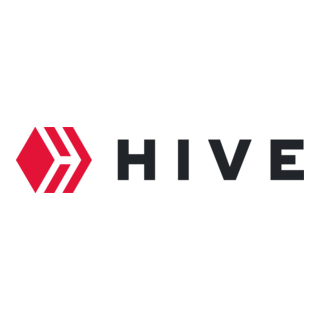AI & Automation for Passive Income
9 comments
Using Al and automation to build a passive income-generating business requires strategic planning and execution. Here's a step-by-step guide to help you get started with zero upfront investment:

Step 1: Research and Choose a Niche
Research profitable online niches that align with your interests and skills. Consider platforms like Amazon FBA, Etsy, or affiliate marketing. Use tools like Google Trends, Keyword Planner, or social media to identify trending topics.
Step 2: Create High-Quality Content
Develop a content strategy to attract and engage your target audience. This can include:
- Blog posts: Write informative articles on your chosen niche.
- Videos: Create high-quality, engaging video content on platforms like YouTube.
- Podcasts: Produce audio content on popular platforms like Apple Podcasts or Spotify.
Step 3: Set Up a Website or Online Store
Create a professional website or online store using platforms like:
- WordPress: A popular content management system (CMS) with a wide range of themes and plugins.
- Shopify: An e-commerce platform ideal for setting up an online store.
- Wix: A website builder with drag-and-drop functionality and new AI build function.
Step 4: Leverage Social Media and Email Marketing
Build a social media presence and email list to reach your target audience:
- Social media: Create profiles on platforms like Facebook, Instagram, Twitter, LinkedIn, or InLeo.
- Email marketing: Use tools like Mailchimp or ConvertKit to create and send targeted email campaigns.
Step 5: Automate and Outsource
Use tools and services to automate repetitive tasks and outsource work to freelancers or virtual assistants:
- Automation tools: Use Zapier, IFTTT, or Automator to connect different apps and services.
- Freelance platforms: Hire freelancers on platforms like Upwork, Fiverr, or Freelancer.
Step 6: Monetize Your Business
Implement revenue streams to generate passive income:
- Affiliate marketing: Promote products or services and earn a commission for each sale.
- Sponsored content: Partner with brands to create sponsored content.
- Digital products: Sell e-books, courses, or software products.
Step 7: Analyze and Optimize
Track your progress and adjust your strategy to optimize performance:
- Analytics tools: Use Google Analytics or other tools to track website traffic, engagement, and conversion rates.
- A/B testing: Experiment with different versions of your content or website to improve performance.
To get started with zero upfront investment, focus on creating high-quality content and building your online presence. Utilize free tools and resources to automate and outsource tasks. As your business grows, you can invest in paid tools and services to scale your operations.
Here's a more detailed explanation of each step, along with additional information on the tools and resources:

Step 1: Research and Choose a Niche
- Research profitable online niches: Use tools like:
- Google Trends: Analyze search volume and trends for various keywords.
- Keyword Planner: Identify profitable keywords and topics.
- Social media: Research trending topics and hashtags on platforms like Twitter, Instagram, or Facebook.
- Identify your target audience: Create buyer personas to understand their needs, preferences, and pain points.
- Choose a niche: Select a profitable and sustainable niche that aligns with your interests and skills.
Step 2: Create High-Quality Content
- Blog posts: Use platforms like:
- WordPress: A popular CMS with a wide range of themes and plugins.
- Medium: A blogging platform with a built-in audience.
- Ghost: A simple, minimalistic blogging platform.
- Videos: Create high-quality video content on platforms like:
- YouTube: A popular video-sharing platform with a massive audience.
- Vimeo: A video-sharing platform ideal for creative professionals.
- TikTok: A short-form video-sharing platform with a large audience.
- Podcasts: Produce audio content on platforms like:
- Anchor: A podcast hosting platform with a built-in audience.
- Buzzsprout: A podcast hosting platform with analytics and monetization tools.
- Spreaker: A podcast hosting platform with a built-in audience.
Step 3: Set Up a Website or Online Store
- Website builders: Use platforms like:
- Wix: A website builder with drag-and-drop functionality.
- Squarespace: A website builder with a focus on design and user experience.
- Weebly: A website builder with a drag-and-drop editor.
- E-commerce platforms: Use platforms like:
- Shopify: An e-commerce platform ideal for setting up an online store.
- BigCommerce: An e-commerce platform with a wide range of features and integrations.
- WooCommerce: An e-commerce plugin for WordPress.
Step 4: Leverage Social Media and Email Marketing
- Social media: Create profiles on platforms like:
- Facebook: A social media platform with a large audience.
- Instagram: A visual-driven social media platform.
- Twitter: A real-time social media platform.
- Email marketing: Use tools like:
- Mailchimp: A popular email marketing platform with a free plan.
- ConvertKit: An email marketing platform with advanced automation features.
- ActiveCampaign: An email marketing platform with automation and CRM features.
Step 5: Automate and Outsource
- Automation tools: Use platforms like:
- Zapier: An automation tool that connects different apps and services.
- IFTTT: An automation tool that connects different apps and services.
- Automator: An automation tool that connects different apps and services.
- Freelance platforms: Use platforms like:
- Upwork: A freelance platform with a wide range of services and professionals.
- Fiverr: A freelance platform with a focus on small projects and services.
- Freelancer: A freelance platform with a focus on large projects and services.
Step 6: Monetize Your Business
- Affiliate marketing: Partner with brands to promote their products or services.
- Sponsored content: Partner with brands to create sponsored content.
- Digital products: Sell e-books, courses, or software products.
- Advertising: Use platforms like Google AdSense or Mediavine to display ads on your website or online store.
Step 7: Analyze and Optimize
- Analytics tools: Use tools like:
- Google Analytics: A popular analytics tool that tracks website traffic and engagement.
- Mixpanel: An analytics tool that tracks user behavior and engagement.
- Hotjar: An analytics tool that tracks user behavior and engagement.
- A/B testing: Use tools like:
- Google Optimize: A free A/B testing tool that integrates with Google Analytics.
- Unbounce: A landing page builder with A/B testing features.
- Optimizely: An A/B testing tool that integrates with popular marketing platforms.
Images created on Bing with DALL •E3 AI
Posted Using

Comments